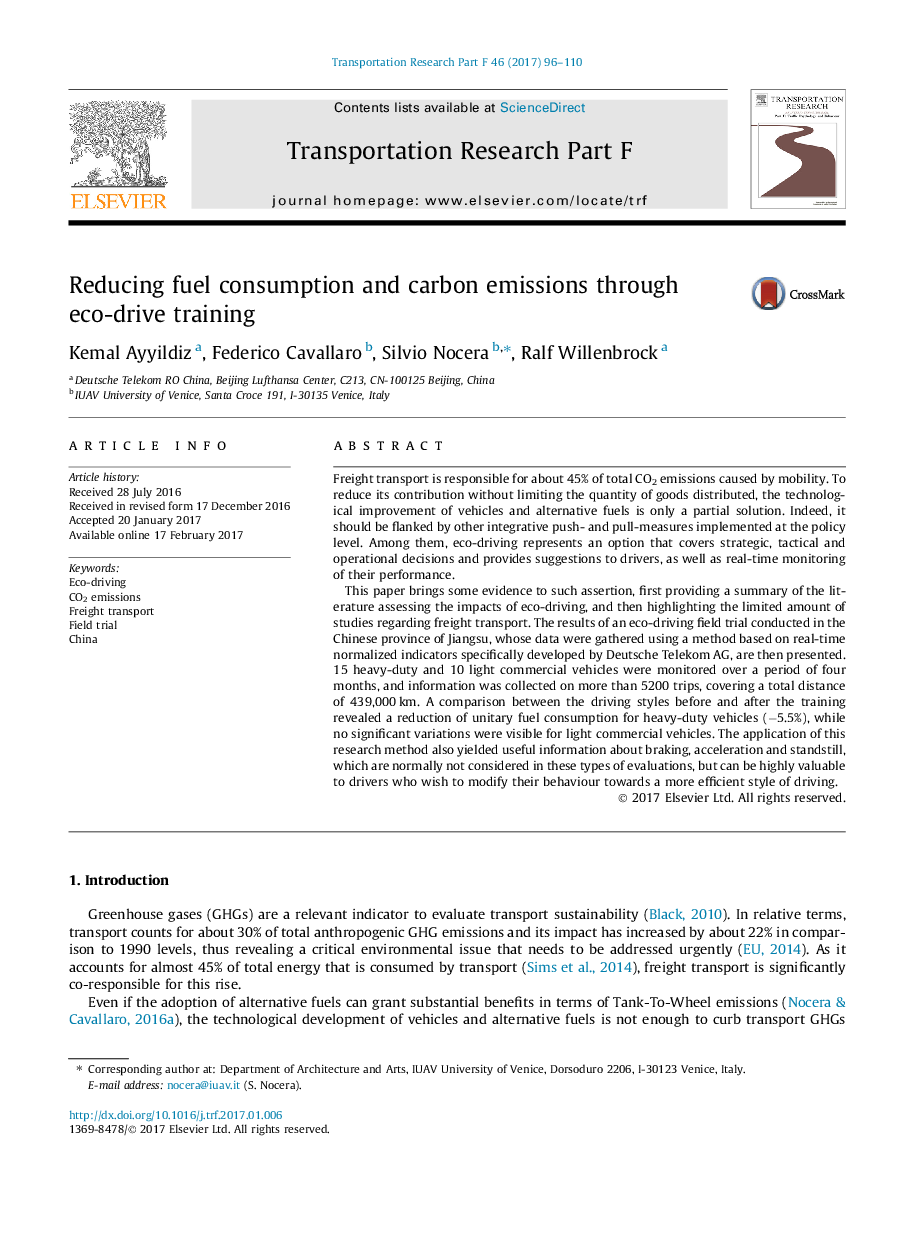| کد مقاله | کد نشریه | سال انتشار | مقاله انگلیسی | نسخه تمام متن |
|---|---|---|---|---|
| 5037432 | 1370222 | 2017 | 15 صفحه PDF | دانلود رایگان |
- Eco-driving is an effective measure to reduce fuel consumptions and CO2 emissions.
- Current methods to evaluate the effectiveness of eco-driving on HDV drivers are simplistic.
- A real-time platform based on key performance indicators has been developed here.
- Such platform is used to test an eco-driving campaign for HDV drivers in Jiangsu, China.
- Results reveal a reduction of fuel consumption and CO2 emissions by about 5%.
Freight transport is responsible for about 45% of total CO2 emissions caused by mobility. To reduce its contribution without limiting the quantity of goods distributed, the technological improvement of vehicles and alternative fuels is only a partial solution. Indeed, it should be flanked by other integrative push- and pull-measures implemented at the policy level. Among them, eco-driving represents an option that covers strategic, tactical and operational decisions and provides suggestions to drivers, as well as real-time monitoring of their performance.This paper brings some evidence to such assertion, first providing a summary of the literature assessing the impacts of eco-driving, and then highlighting the limited amount of studies regarding freight transport. The results of an eco-driving field trial conducted in the Chinese province of Jiangsu, whose data were gathered using a method based on real-time normalized indicators specifically developed by Deutsche Telekom AG, are then presented. 15 heavy-duty and 10 light commercial vehicles were monitored over a period of four months, and information was collected on more than 5200 trips, covering a total distance of 439,000Â km. A comparison between the driving styles before and after the training revealed a reduction of unitary fuel consumption for heavy-duty vehicles (â5.5%), while no significant variations were visible for light commercial vehicles. The application of this research method also yielded useful information about braking, acceleration and standstill, which are normally not considered in these types of evaluations, but can be highly valuable to drivers who wish to modify their behaviour towards a more efficient style of driving.
Journal: Transportation Research Part F: Traffic Psychology and Behaviour - Volume 46, Part A, April 2017, Pages 96-110
